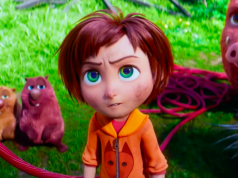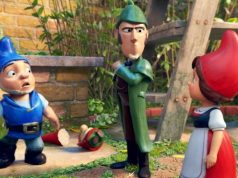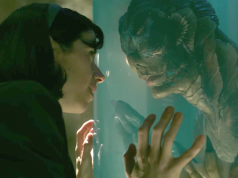There was a time when a film’s being comptuter-animated almost ensured it would be good. The process was so time-consuming that no one would bother putting the effort into it if they didn’t have a solid story in place. Unfortunately, as computer animation gets easier, the films are getting crappier. Witness “Happily N’Ever After,” a deeply lame attempt at fairy-tale spoofery in which the characters look and move like state-of-the-art video-game figures circa 1985.
It’s set in a place called Fairy Tale Land. “Corny, I know,” says the narrator, “but we had to call it something, and Canada was taken.”
That’s as funny as the jokes get, folks, so settle in.
In Fairy Tale Land dwell all the familiar fairy tale characters, their stories apparently repeating themselves over and over again, though they are not aware of this. Everything is monitored by a wizard (George Carlin) from the upper room of a castle, where he makes sure the good-and-evil scale (it’s an actual scale) remains balanced in such a way as to ensure happy endings every time. His two bumbling unclassified-mammal assistants, Munk (Wallace Shawn) and Mambo (Andy Dick), are on hand to, I don’t know, make sure stuff gets screwed up.
The wizard goes on vacation, whereupon Cinderella’s wicked stepmother, Frieda (Sigourney Weaver) immediately seizes control of the upper room from Munk and Mambo, tilts the scales to “evil,” and sits back and laughs as suddenly Cinderella’s godmother-enhanced ball gown turns into tattered rags several hours early, right in front of the prince, ruining all her chances with him.
Cinderella — they just call her Ella — is voiced by Sarah Michelle Gellar, whose husband Freddie Prinze Jr. provides the voice of … Rick. Who’s Rick? Rick is the prince’s royal dishwasher. The prince himself (Patrick Warburton) is a vain idiot, while Rick is the true gentleman who deserves Ella’s love, if only she could get the prince stars out of her eyes, blah blah blah. I think the message is that anyone can be a hero, regardless of their station in life, or some kind of crap like that.
Meanwhile, Frieda, not content with turning all the endings sour (“Happy endings are soooo yesterday!” she declares in one of her screenwriter-trying-to-sound-hip moments), also summons all the villains she can find. Ogres, giants, trolls, and wolves gather at the castle to take over the kingdom and do as they please.
None of the vocal performances are anything special, but they aren’t given anything interesting to say, either. The dialogue is painfully unfunny, the story the very picture of simple-minded thinking. (“What if the fairy tales DIDN’T end happily ever after?!! No one’s ever thought of that before!”)
About the only element of the film that I laughed at was the introduction of the seven dwarfs as Southern redneck weapons-stockpilers. And then that angle ran into a dead end fairly quickly, and the joy was lost.
Directed by third-tier animator Paul Bolger (“Cool World,” “The Land Before Time”) from Robert Moreland’s embarrassingly amateurish script, “Happily N’Ever After” is a perfect blend of strained jokes, unoriginal ideas, and cheap animation. Your children, no matter how awful they may be, deserve better than this.
D (1 hr., 26 min.; )





